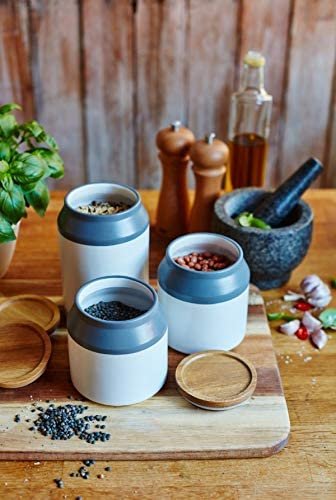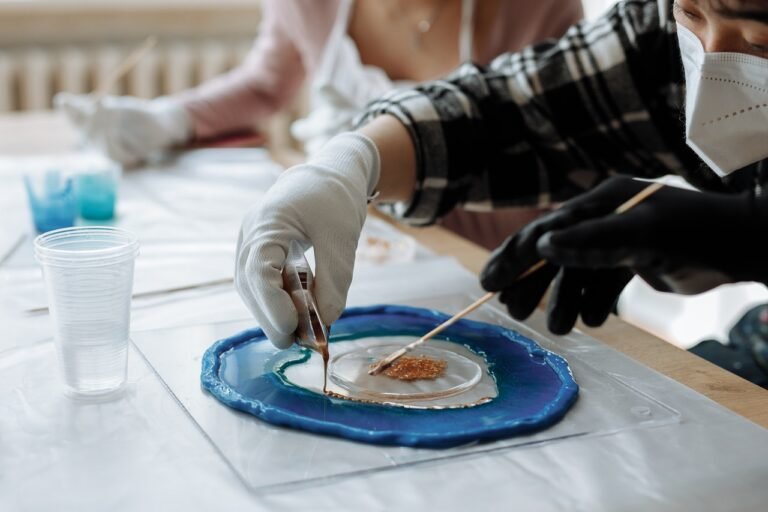What is a Ceramic Pickle Jar?
Many peoples don’t know What is a Ceramic Pickle Jar? Just as the name suggests, a ceramic pickle jar is a container made of ceramic material (porcelain) and is used to store pickles. It can also be used to preserve salty items. Commonly, ceramic pickle jars are applied in two colors for decoration. They also come with a fitting lid with a handle for easy lifting.
They are very common in India where they are referred to as pingani jaadi or peengan jaadi which means they are made out of porcelain. White and brown are the two colors mostly used regardless of size. They are made in different sizes from very small to very large. The large ones are used to store pickles to be consumed for an entire year, while the small ones are used for short period storage purposes. Although the use of pickle jars has greatly reduced, I was fortunate enough to have had an interaction with them.
Can Pickles Be Stored in Ceramic Jars?
Pickling, like any other art, is not for everyone. To get the storage part correctly, all you need is the right jar which should be air-tight, durable, and safe for food. Ceramic jars have all the stated qualities; hence can be used to store pickles. To make sure they are completely air-tight I use a polythene sheet beneath the lid.
Why Pickle is Stored in Ceramic Jars? (What is a Ceramic Pickle Jar)
Pickles are very popular in India, where a meal is not complete in their absence. They add extra flavor and improve the overall taste of food. The secret to great tasty pickles is the fermentation process which demands flawless preservation. As stated above, ceramic jars meet the basic qualifications therefore, I want to go into detail and show you other qualities that make ceramic jars suitable for storing pickles.
The porcelain material does not react with the pickles. Pickles are acidic in nature and can react very easily with other materials.
Ceramic is easy to clean due to its non-porous nature which does not attract dirt easily.
Ceramic jars are extremely durable and scratch-resistant. If you make sure they do not get shattered by falling and hitting a hard surface, they have a long service period.

Is Ceramic Container Safe?
A ceramic container is the safest among other kitchenware materials. For many years, people have used ceramic cookware and there have been no side effects. As long as the firing process is done properly at the right temperature for the required amount of time, all the components in the clay will melt properly. Lead is a common component found in a glaze so glaze particles can melt easily.
Most traditional potters have started using lead-free glazes to avoid the risk of contamination. Although this is a great step, if they are still using the old kilns used to fire lead-contained glazes there is still a risk of food contamination.
To be on the safe side, I would advise on the use of ceramic containers from commercial factories as they are less likely to be contaminated. It is also good to check whether your existing ceramic jars have these problems – handmade with irregular shape and a crude appearance, antique, extremely worn and damaged, decorated with bright colors such as orange, yellow, or red, and the reliability of the manufacturer cannot be determined.
You can test your ceramic containers for safety by using lead-testing kits available in hardware stores. Make sure to check warning labels before purchasing to ensure you only use those made for food purposes.

What Pottery is Famous for its Pickle Jars?
Rongchang Pottery from southwest China, a place called Chongqin is famous for its unique pickle jars. It is one of the four well-known and deep-rooted traditional potteries with a great historical reputation. Rongchang pottery is started over 2000 years ago during the Han Dynasty (202 BC-220 AD) based on fine tradition for Chinese folk ceramic arts. The technique used joined the list of national intangible heritage in 2011.
Rongchang pottery is suitable for making pickle jars because the shape, structure, and proportions are made to align with each other in harmony. The type of clay used is delicate and compact, with good plasticity and fine sintering. The final result is a beautiful piece of pottery.
Related: 10 Pottery Tools You Need to Own! (For Beginners)
How Do You Clean Ceramic Jars?
I usually prefer cleaning ceramic jars before and after use. First of all, as a precaution to avoid injuries, always check the rims of the jars to ensure they are smooth and without any cracks. The items needed here are;
Soap, warm water, lemon, baking soda, salt, and a piece of cloth. Considering pickle jars are mostly used for long-term storage, this part is very critical.
To begin with, wash your hands for hygiene purposes, with soap and clean water. Do not handle ceramic jars with soapy hands because they can easily slip and fall. A scenario nobody wants to encounter.
You can add lemon and baking soda to warm soapy water. Lemon and baking soda serve as sterilizers and the soap should not contain harsh chemicals. The plan here is to preserve the durability of our ceramic jars for as long as possible so consider checking the components of soap. At this point, professional advice will come in handy.
Dip the jars one by one into the water carefully to avoid collision and leave for about 5-10 minutes. After that, clean using a soft piece of cloth to avoid scratching the smooth surface. For deep jars, you can use a soft cloth with a handle to reach the bottom and inside of the jars to ensure all areas are covered.
In case of tough stains, hydrogen peroxide can be applied to the cloth. Gently scrub on the stain until you are satisfied they are gone.
Once done, remove the jars using a dry cloth and dip them in warm water for a final rinse.
After rinsing, dry with another clean cloth and store in a clean, dry, dust-free area.







